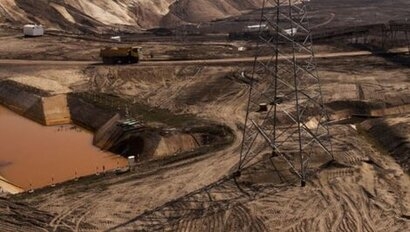
Such a transition would lower overall power system costs in the Łódź region of Poland, where the plant is located, while maintaining critical energy security.
The Belchatow power station today plays a vital role in the central European energy grid and is the sixth largest coal-fired power plant on Earth. BNEF finds that deploying 11 gigawatts of wind and solar in the region to replace 80 percent of Belchatow’s ‘brown’ coal generation is possible from a land-use perspective. Alternatively, some 6 GW of wind and solar paired with a gas, biomass or waste-to-energy plant could achieve similar output. Its analysis examines the feasibility of deploying lower-carbon technologies and offers a possible transition roadmap to do so. The report was released today by Bloomberg Philanthropies and BNEF in partnership with Forum Energii at an event in the Polish region of Łódź where the Belchatow plant stands.
Local lignite resources in Belchatow are likely to run out latest by 2036, forcing the plant to shut. War and an energy crisis have boosted recent demand for coal but the longer-term outlook for coal and lignite power plants in Europe remains bleak. Lignite generation drops by 75 percent over 2021-2030 in Poland even under sustained high gas prices, according to the BNEF study. Belchatow supplies a fifth of Poland’s power and sits at the heart of the Polish power system and energy security. The successful transition of the Belchatow coal power plant could serve as an example for coal-regions around the world.
“As the effects of climate change worsen, Europe’s energy crisis and Russia’s invasion of Ukraine only underscore countries’ urgent need to choose clean energy and cut their reliance on fossil fuels” said Michael R. Bloomberg, UN Secretary-General’s Special Envoy on Climate Ambition and Solutions and founder of Bloomberg LP and Bloomberg Philanthropies. “This new report shows a promising path to replacing Europe’s biggest coal-fired power plant with alternative and resilient clean energy sources – and it can serve as an example for coal regions in Europe and globally that are looking to reap the health and economic benefits of clean energy.”
Joanna Maćkowiak-Pandera, PhD, CEO of Forum Energii, added that the construction of new, low-emission sources in the Bełchatów region must be started as soon as possible in order to maintain the security of energy supply at a high level and reduce electricity prices and that lignite resources in Belchatow are limited in time and will run out soon.
BNEF also finds that very little new generation capacity is currently planned for the Łódź region. The 600 MW solar and 100 MW wind projects announced by Belchatow-owner PGE would replace only 4 percent of the plant’s 2021 lignite generation. The current lack of transition plans for replacing lignite puts Poland’s energy security at risk and could see valuable grid infrastructure around Belchatow become stranded.
BNEF’s analysis presents several alternatives for replacing the decline in lignite generation at Belchatow alongside wind and solar, including thermal plants such as gas, biomass or waste-to-energy. However, fuel availability and price would limit the feasible size of thermal plants. While Poland is expanding its import capacity for liquefied natural gas to make up for lost imports from Russia, securing investments for a new gas pipeline to Belchatow could be challenging in the current market environment. Nuclear is unlikely to replace lost lignite generation on time as new capacity often takes more than 10 years to plan and build.
Concrete plans to prepare for Belchatow’s retirement and accelerate the deployment of new low-carbon capacity could open the door for the plant to benefit from Just Transition funding from the EU. Poland has the potential to receive around 3.5 billion euros to support five of its regions transition away from coal by 2030. These funds could help the Łódź region with targeted reskilling efforts and new economic development opportunities, and reduce the impact of lost jobs once lignite mining and generation drops. New clean energy projects could boost the local economy and enable the region to continue playing a key role in Polish power production and in the country’s economy.
For additional information:

